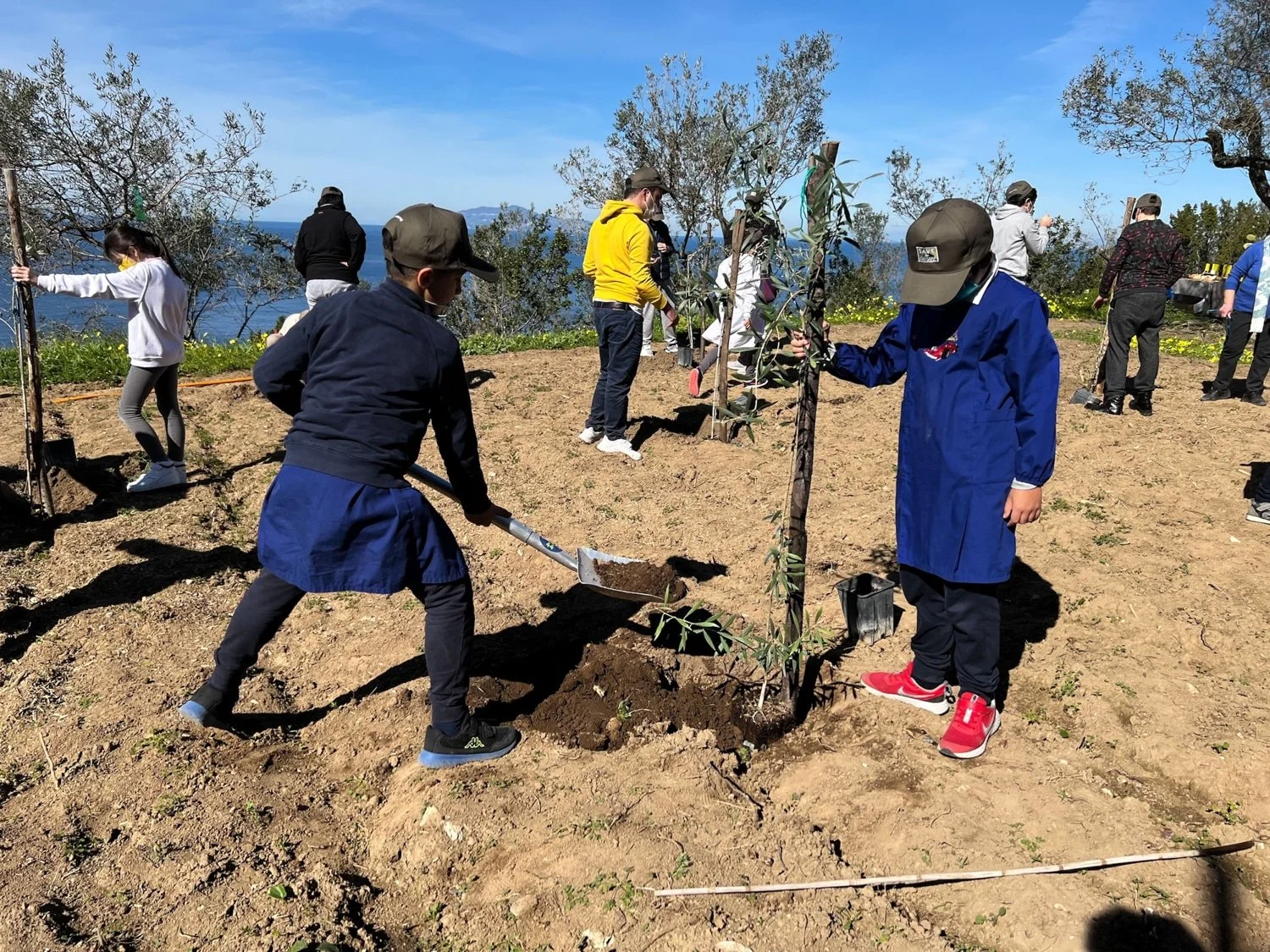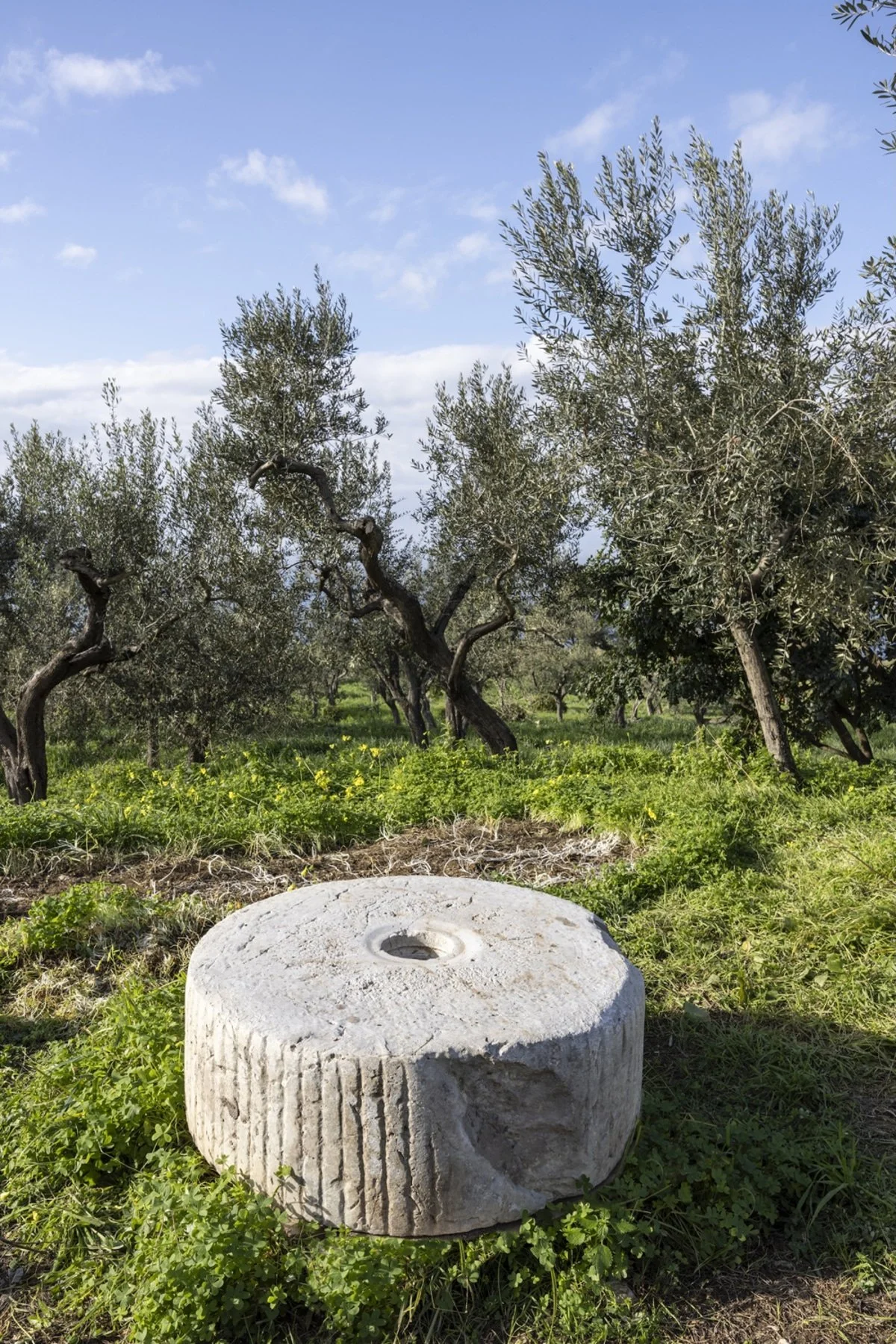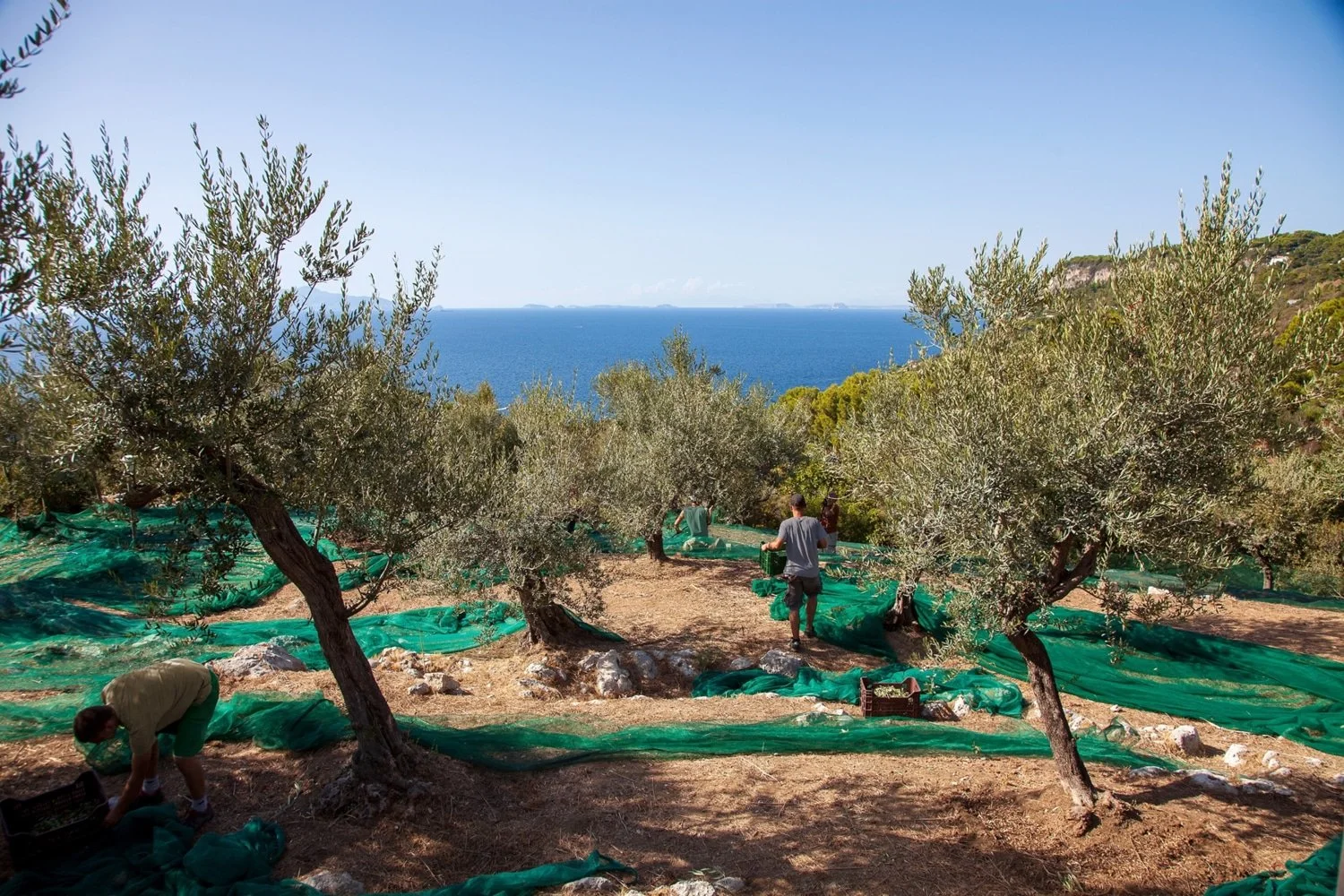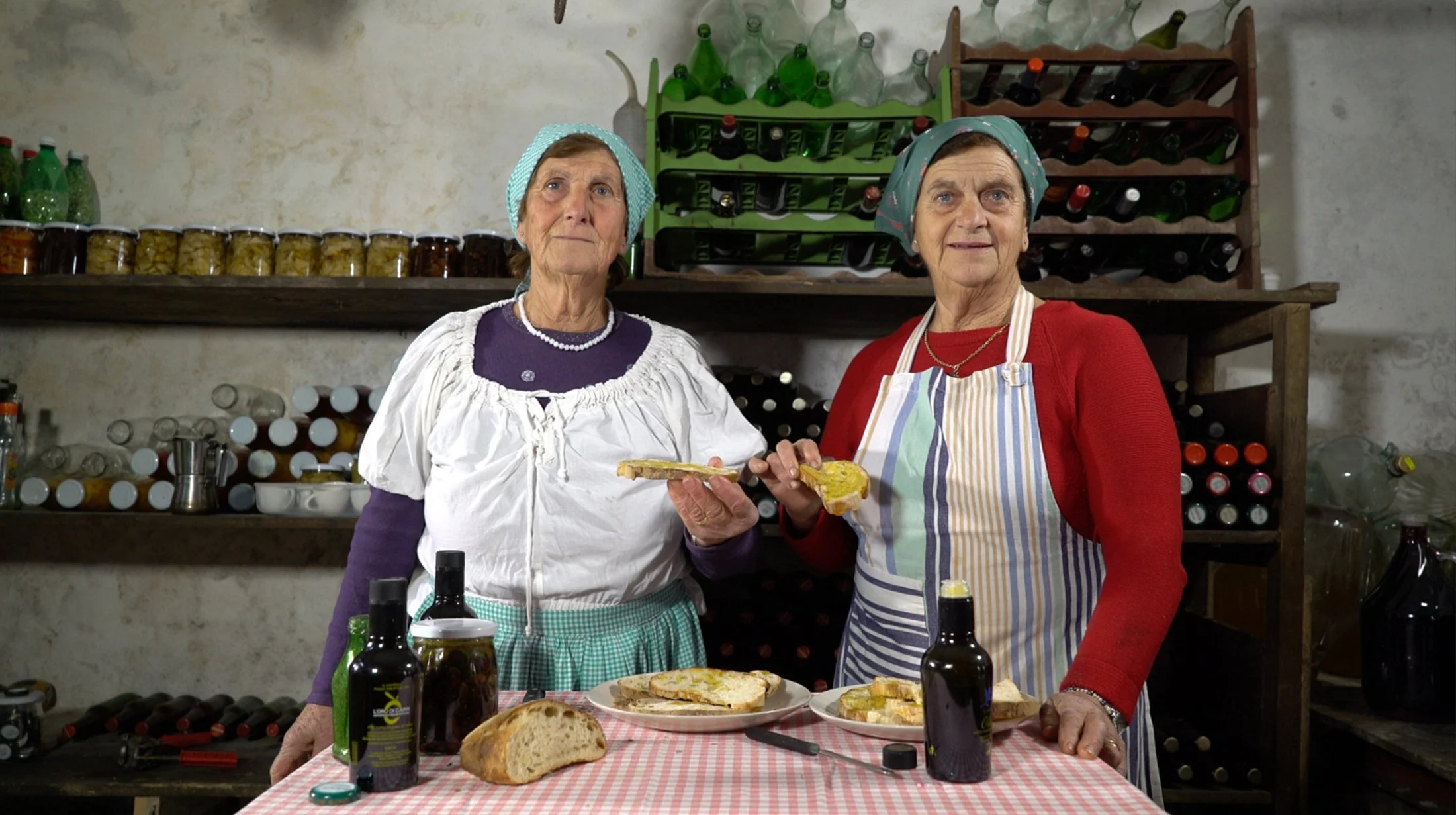The Olive Groves of Capri
A classic Caprese salad is fresh mozzarella, tomatoes and basil, with a healthy drizzle of olive oil. But did you ever consider if the ingredients might come from Capri? Olive oil is certainly not what the island is known for, but that may be changing.
Olive trees on Capri photo credit L.Romano
The sparkling nightlife in the world-famous Piazzetta, brimming with famous people and visitors. The unmistakable rocky outline of the Faraglioni rises from the blue of the sea. The incredible blue glow that illuminates the water under the Blue Grotto, the enchanting panoramic view from the Belvedere of Tragara, and the tiny lanes full of designer shops and shining jewels. These are only a few of the many reasons why Capri, the most well-known and globally loved of the Gulf of Naples’ islands, has been bewitching visitors since the age of Roman emperors Augustus and Tiberius, who settled their retreats here and even before that.
Yet, there is another, less known side of the island – which Romans knew, for sure – that long stayed detached from the rest and still offers a different experience to visitors willing to climb its streets: this is Anacapri, one of the island’s two cities, situated on the slopes of Monte Solaro, the island's highest point. Here, over the centuries, the farmers lived and cultivated, living a parallel life (sometimes based upon peace and exchange, some others on quarrel) with the sailors and fishermen. And here, next to orchards and lemon trees, olive groves thrived. At least until when the island of Capri became a world-class destination.
Capri olive grove: a precious gift from the past
“Anacapri used to be a farming village, and the olive tree was a staple: from the wood to the lighting oil, and of course to the edible one," explains local agronomist Carlo A. Lelj Garolla. “Over the decades, since tourism took hold, nobody took care of the farmland any longer, and the Mediterranean scrub invaded the olive groves: to survive, the trees had to grow upward, reaching even six or seven meters in height."
Lelj Garolla is also a member of the board of L'Oro di Capri, an Association established in 2014 to promote the recovery of olive groves on the island and rediscover and enhance traditional agricultural culture and practices, thus also protecting and safeguarding the environment and rural landscape of Capri, both from natural threats and indiscriminate building development.
A Diverse Ecosystem
Planting olive trees on Capri
Over more than 10 years, they have recovered about 40 hectares of productive olive trees and an overall olive grove surface of 50 hectares, including a few thousand-year-old trees: “We retrieved almost all the terraced coastal olive belt, mostly spreading along the so-called Sentiero dei Fortini (the Fort's Path, editor’s note) stretching on the western coast of the island, between the Blue Grotto and the lighthouse of Punta Carena: almost all the island’s olive trees grow in Anacapri, testifying its’ farming soul. Yet we did not prioritize olive over Mediterranean scrub, even in the producing land: Capri never had an olive tree monoculture, and this would have meant distorting its landscape. This is why we also left the pine trees: they were only planted relatively recently, yet they became a part of the local landscape,” Lelj Garolla specifies. “We almost finished our job in recovering the olive groves, with only a few more hectares to retrieve. Yet, the work is ongoing since we have to keep everything clean and tidy and preserve the landscape, even in those extreme areas where the trees can’t be harvested”.
Oro di Capri's mission to preserve the local landscape and culture
Anacapri olive trees at Punta del Pino photo credit L.Romano
Oro di Capri was founded in 2014 by a small group of local growers, primarily driven by Gianfranco D'Amato, the Association's honorary chairman, a Neapolitan entrepreneur and Capri aficionado, who was charmed by the wild beauty of the olive trees growing along the Fortini path. Initially, the presence of a "foreigner" raised some caution and diffidence. However, it is now widely acknowledged on both the island and the mainland, with approximately 60 members. Pierluigi della Femmina, grower and producer, is the chairman.
Amongst them, a few are olive oil producers: “The biggest one has about 20 hectares of olive groves, while the others are quite small and fragmented. Oro di Capri is not a producers' consortium. It is not based on olive oil production, which the single members privately manage. We mostly want to take care of maintaining the landscape and nature.”
Yet, thanks to the producing members and the Association's drive, olive oil production still (and again) is a thing in Capri: they created a growing and producing regulation for those who want to use the Oro di Capri label on their bottles. Neapolitan agronomist Angelo Lo Conte is in charge, also offering precious growing and harvesting advice.
Capri’s extra virgin olive oil
Harvesting olives on Capri
With no olive mill still in operation on the island (once, there were ten or so), the harvested olives are collected in mid-September, when they are still mostly green, and shipped daily by refrigerated transport to the mainland to be processed in the up-to-date mill at Fattoria d’Ambrosio, in the Cilento region.
The main variety growing here is the native minucciola, also spread along the foreland Penisola Sorrentina and probably related to the Dritta di Moscufo, common in the Abruzzo region, flanked by fewer trees of rotondella, frantoio, leccino, and itrana (while scientific research carried out by the Association also identified other lesser, wild varieties, amongst which the two thousand-year-old trees seem to have landed here from Greece and Turkey.)
Thousand year old olivo dei monaci
Most of the Oro di Capri labeled oils are a single variety from minucciola, often bearing a distinctive rosemary scent along with other herbal flavors and a well-balanced bitter and spicy profile; these include Il Pino, from the namesake Pierluigi della Femmina’s farm, and Gianfranco D’Amato’s Il Cappero, from the namesake farm – the biggest one on the island –, also producing a blend and a few different "crus" (single estates). Seven farms belonging to the Association entered the Slow Food Extra Virgin olive oil guide in 2025, with a few also getting awards and the Ancient olive groves Presidium recognition from the global Association. And thanks to Oro di Capri's efforts, Anacapri is now part of the Città dell’Olio network and Association, which gathers several Italian municipalities where olive-growing is an essential part of the landscape, economy, and heritage.
Visiting and getting to know Capri olive groves
Vista of olive trees at Punta del Pino photo credit L.Romano
While many of the majestic old trees are easily visible all year long, walking along the Sentiero dei Fortini and in other areas in Anacapri, the Oro di Capri Association is also focused on promoting and popularizing the local farming culture in different ways. Four or five times per year, educational workshops and guided tours are offered on special occasions, such as the FAI Days held in Spring and Fall by the National Trust focused on protecting and enhancing Italy's historical, artistic, and landscape heritage, or the Città dell’Olio Walk through the olive trees (in October). A beautiful documentary L’Oro di Capri, was shot in 2021 by Fiamma Marchione. A more recent one L’Altra Capri, was recently broadcast on the Italian national TV channel Rai 5. Note: both are in Italian, but you can enable the closed captions and auto-translate. Illustrator Simonetta Capecchi created, upon the Association’s appointment, an “illustrated reportage” showing the landscape engraved by the terraced olive groves and the many activities carried out with local schools year-round. In 2025, until October 26th (the date for the Walk through the Olive Trees), Villa Rosa in Anacapri hosts the photo exhibit Gli alberi della vita: olivi, volti e storie dal paesaggio anacaprese (The Trees of Life:olive trees, the faces and stories from the Anacapri landscape) also featuring a video art installation realized by Luciano Romano upon an idea from Gianfranco D'Amato, with the collaboration and consultancy from the director Mario Pistolese and the anthropologist Helga Sanità.
Enjoying the Olive Oil of Capri
Women with olive oils from Capri
And, of course, promoting olive oil culture cannot disregard food service: Columbus restaurant in Anacapri, run by Vincenzo Torelli (Oro di Capri's vice president), sells all the members' extra-virgin olive oils, which can also be purchased online. And today, after a long struggle to explain the reasons behind the products' price, which is, of course, higher than the average, many other restaurants in Anacapri (and one in Capri, also) proudly serve the local extra virgin oil at their table. And the sea is not a limit, indeed: through joint efforts, Oro di Capri was even able to ship the oils to Cold Spring, New York, where Cafè Silvia at Magazzino Italian Art (the only North American museum dedicated to Postwar and Contemporary Italian art and culture) serves and sells the precious bottles from the island.







